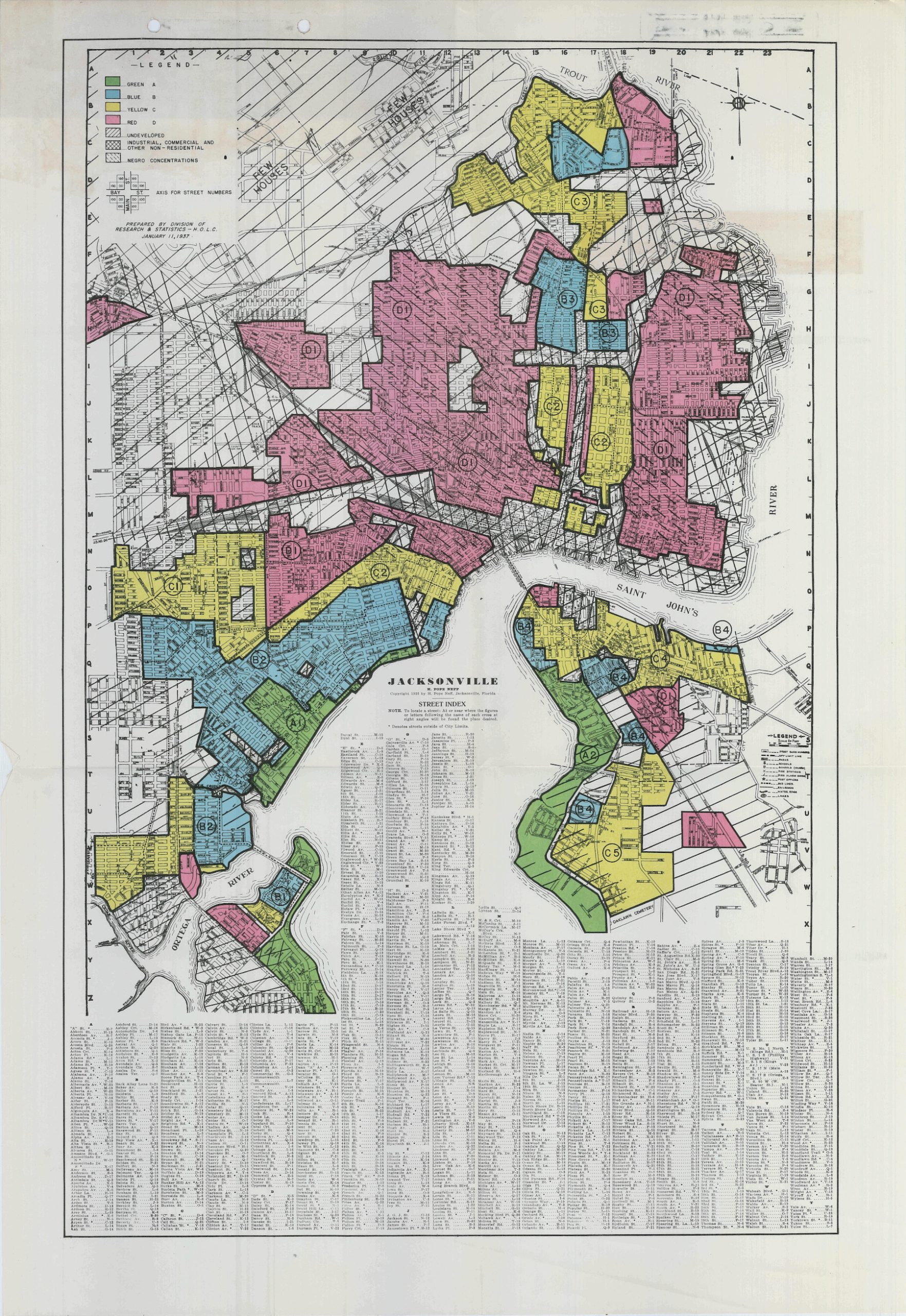In 1934, Florida voters approved a homestead exemption on the first $5,000 of a property’s value to help homeowners by lowering their property tax bill. Although the 1940 Census does not offer housing statistics based on race and ethnicity, it does offer a rough sketch of housing inequality at the time: white owner-occupied homes outnumbered Black homes by a five-to-one ratio. Also, in 1934, the Federal Housing Administration (FHA) began insuring home mortgages but required that the properties be in white-only neighborhoods. This codified the practice of redlining — labeling Black neighborhoods as risky investments associated with property value decline — to deny Black homebuyers’ mortgages. Following FHA’s example, private lenders also started redlining. Additionally, FHA favored loans for new suburban construction over older urban properties, simultaneously contributing to urban decay and the growth of white suburban neighborhoods, all while discriminating against Black communities and other communities of color. Due to inequitable access to homeownership prior to and after 1934, the homestead exemption overwhelmingly helped white households.

Image Source: The Miami Herald
Image Description: Newspaper clipping stating that sales tax will follow Homestead Exemption, 1934
